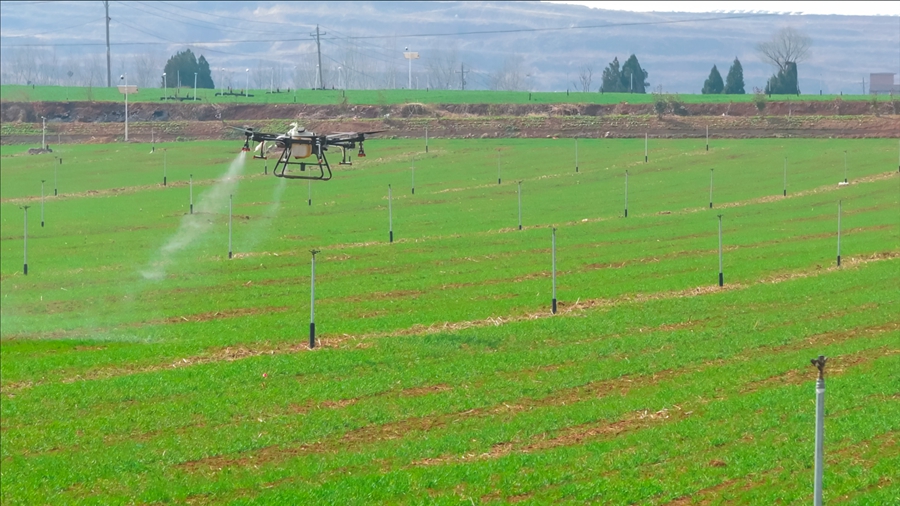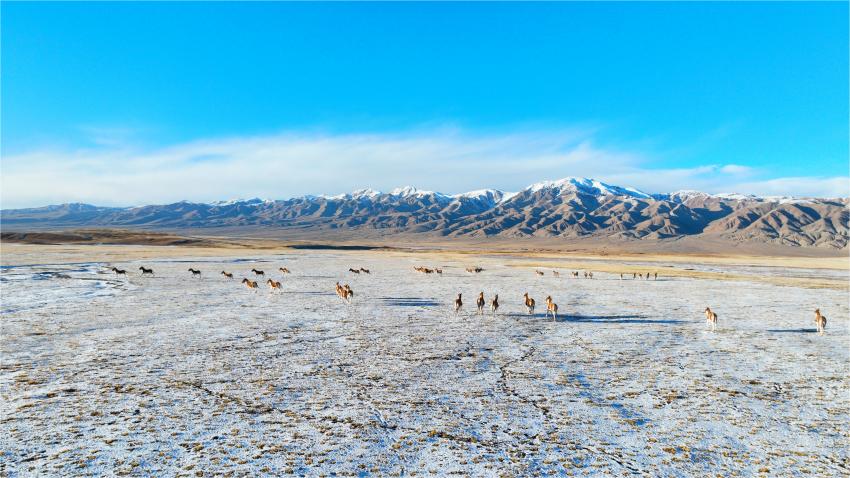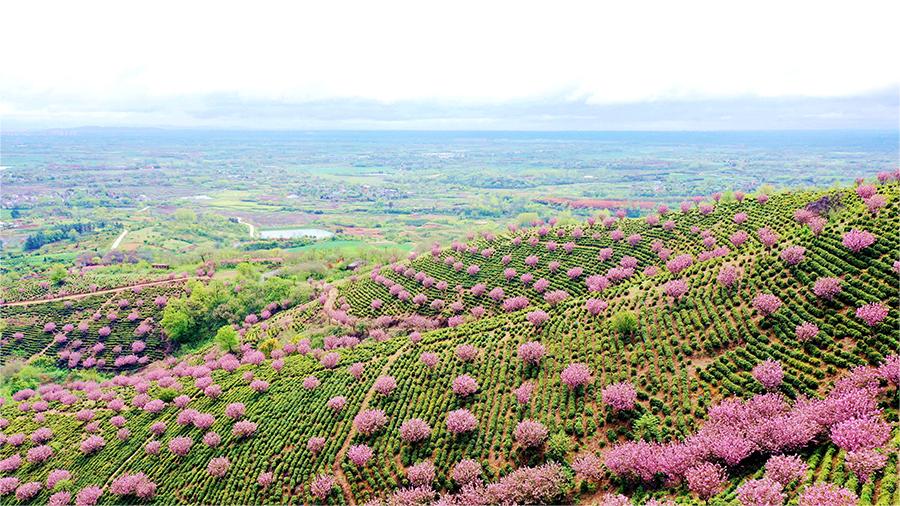New quality productive forces empower spring farmland management
Farmland management has taken top priority in agricultural production this season. With the assistance of new quality productive forces, spring farmland management has unfolded across the vast fields of China.

A drone sprays pesticides over a field in Yichuan county, Luoyang, central China’s Henan Province, March 12, 2024. (Photo/Zang Guangju)
On March 21, a seeding machine was running at full capacity, producing long rolls of paper with evenly distributed rice seeds at the 3D printing seeding room at the Xidong Agricultural Machinery Cooperative in Gongtian township, Yueyang county, central China's Hunan Province.
Yang Hongbo, head of the cooperative, said the 3D printing seeding technology was introduced by Hunan Agricultural University.
The technology enables the rice seeds to be coated to improve their resistance to diseases and pests during the seedling stage. After careful consideration of the seed germination rate and the seedling extraction pattern of the transplanter, the treated seeds are precisely placed on special paper.
The facility has a maximum capacity of processing seeds to be sown on 1,000 mu (66.67 hectares) of farmland per day, and the seeds can be stored at room temperature for three to six months.
"Compared to traditional tray-based seedling cultivation, 3D printing seeding offers advantages in terms of uniformity, resource conservation, and yield improvement," said Yang.
According to Yang, the technology achieves precise positioning, resulting in a seed germination rate of over 98 percent. It reduces seed usage by approximately 50 percent compared to conventional machine transplanting, making the seeding process more convenient and labor-efficient.
In 2023, the technology was implemented in two towns and townships in Yueyang county, covering 20,000 mu of farmland. The adoption of the technology led to saving 1 kilogram of seeds per mu, a 10 percent increase in yield, and a 50 yuan ($6.91) per mu increase in efficiency.
At a carrot planting base in Hualong township, Shouguang city, east China's Shandong Province, workers from a local food company were sowing carrot seeds in the field. As the seeder moved forward, a thin string was slowly released from the machine and effortlessly spread along the ridges.
"This string is a carrot seed rope. Using this method ensures that the seeds are evenly distributed," explained Liu Tianying, a senior agronomist at the Bureau of Agriculture and Rural Affairs of Shouguang.
"Carrot seeds are pelletized before being woven into a rope," said Li Xinghua, head of the food company.
In the company's seed processing workshop, the seed weaving machine were activated once the operator set the parameters. The pelletized carrot seeds were carefully picked up one by one through a straw and placed in an orderly manner on the rotating seed belt. As the seed belt rotated, the seeds were woven into a seed rope, which was then neatly wound onto the seed tray. The entire process was efficient and well-coordinated.
"In the past, traditional carrot planting methods posed a challenge in accurately controlling spacing, and often resulted in seed wastage," explained Li. "With the seed weaving machine, we are now able to effectively manage seed costs, and achieve precise sowing."
"In 2013 when we started to grow carrots, the per mu yield was only around 3 tonnes, but now we can achieve an average yield of 8 tonnes per mu," said Li.
In 2023, the grassland farm of the Beidahuang Group, a leading agricultural conglomerate in northeast China's Heilongjiang Province, implemented shallow-buried, film-less integrated water and fertilizer drip irrigation technology on 64,000 mu of land.
In May and June 2023, the farm experienced a severe drought, lasting 48 consecutive days without any significant rainfall.
However, the areas that implemented the drip irrigation system were able to overcome this challenge. This system provided the timely and precise supply of water and fertilizer. Consequently, the crops in these areas exhibited robust growth, with a noticeable increase in height by 40-50 centimeters compared to those without this technology.
Last year, the implementation of the irrigation technology for silage production on 9,500 mu of land resulted in an average yield of 4.6 tonnes per mu, with the highest yield approaching 6 tonnes.
Photos
Related Stories
- SW China's enterprise makes efforts to develop new quality productive forces
- China unveils measures to promote industrial equipment upgrades
- Development of new quality productive forces drives industrial growth
- Fujian eyes high-quality growth driven by new quality productive forces
- New quality productive forces to invigorate China's growth, impel global development: Chinese ambassador to U.S.
- China's central bank unveils relending facility for sci-tech innovation
Copyright © 2024 People's Daily Online. All Rights Reserved.









